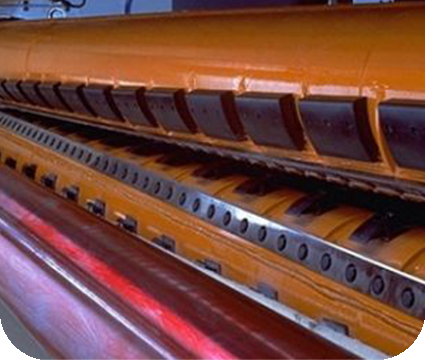
Unico’s Smart Rotary Cutoff (RCO) Drive is a digital signal processor (DSP) based variable-speed drive with an embedded software block to control a rotary cutoff. The program offers many programmable features that enable OEMs, integrators, and users to customize the functionality of the software to the application. The primary characteristics of our rotary cutoff control are dynamic feedback sourcing, maximum line velocity calculations, real-time trackers, communication protocols, many inputs, and output options, among others.
Cut-to-Length or Cut-to-Mark
The rotary cutoff control cuts a continuously moving web of material into specified lengths. A measuring wheel is used to track web movement. Two different modes offer the choice of cutting prescribed lengths or cutting relative to printed registration marks using a mark detector to scan the web. Windowing features minimize spurious mark errors during registration cutting.
Pattern Recognition
The drive can search for a user-defined pattern of marks on the web. When a pattern is recognized, the cutoff makes a cut at a specific location relative to the last mark in the pattern. A pattern tolerance setup establishes the degree to which the distance between consecutive marks can vary from the set distance and still be considered a valid part of the pattern.
Simulators
Two simulation tools facilitate setting up, testing, and troubleshooting a rotary cutoff system. A line simulator makes it possible to run the cutoff without a web by simulating the feedback that the measuring wheel or pull roll would provide as the line ramps up, ramps down, or runs at speed. A mark detector simulator provides marks at a specified separation to allow testing in cut-to-mark mode.
Batch Control
Two different part lengths and batch sizes can be specified at once, allowing the operator to set up the next order while the current one is running. In cut-to-mark mode, batches also specify the mark offset and up to eight pattern edges. Orders change automatically at the end of a batch or when requested by the operator. A customizable early warning feature indicates when a batch is nearly complete. A single length may also be produced indefinitely.
Micro Trim Adjust
A micro adjust feature compensates for length errors caused by wear or build-up on the measuring wheel or rolls. The operator enters the measured length of a part, and the program recalculates the correct measuring wheel circumference to bring the cut and requested lengths into agreement.
Customized Tuning
A customized tuning approach reduces the cut error during line velocity changes to minimize bad parts and scrap caused by line stops.
Dynamic Feedback Sourcing
The cutoff can follow line speed feedback from two different sources and switch between them “on the fly” to enable tailout and line thread operations.
Dual-Motor Operation
The control supports both single- and dual-drive and motor operation. If two motors are coupled to the knife, the user must arbitrarily choose one drive as the master and the other as the slave.
Maximum Line Velocity Calculation
The program calculates the maximum velocity at which the line can operate based upon sheet length. The velocity is computed using a number of parameters that describe the knife, knife motor, and knife drive.
Cam Outputs
Programmable limit switch (PLS) outputs replace mechanical cams by electronically following the position of the rotary cutoff.
Real-Time Trackers (AOC Timers)
Up to four programmable web tracking controllers can be used to trigger external devices. Real-time tracking is based on encoder feedback, such as from a measuring wheel (LPG). These web trackers can be used in conjunction with complete dry-end AOC controllers.
Smart AC Digital Drives
Unico’s 1000 and 2000 drive families provide powerful, flexible digital flux vector control for sophisticated, performance-oriented applications. The drives have been designed for complete flexibility and offer a variety of feedback, programmable I/O, and communication options. They incorporate a number of energy-conserving features, including line regenerative capabilities for exporting energy back to the power grid. Both drive families can take advantage of a modular DC bus configuration for sharing or recirculating energy among multiple drives.
Communication Protocols
The drive supports a variety of serial communication protocols for connecting to virtually any PLC or HMI. The drive can also operate in a stand-alone mode using the built-in keypad/display with an ANSI protocol connection to a simple serial display unit.
- CANopen
- Ethernet
- Profibus
- CC-Link
- Interbus
- Remote I/O†
- ControlNet
- Modbus Plus
- RS-232/422/485
- DeviceNet
- Modbus RTU
†Supported only by the 2000 family platform
Inputs & Outputs
All inputs and outputs are user-enabled and are mapped to hardware I/O points to allow customization of the control. They are also accessible through a high-speed serial communication link.
Inputs
- motor on
- fault reset
- DC field on
- motor thermal ok
- motor blower ok
- jog forward
- jog reverse
- goto position
- goto auto off
- auto
- order change
- follow source
- dereference
- cut to mark
- skip mark
- set window
- advance offset
- retard offset
- reference switch
Outputs
- motor on
- no fault
- no warning
- DC field on
- manual
- auto
- reference
- at position
- line too fast
- cut error
- at goto position
- at auto off position
- goto auto off
- batch complete
- early warning
- missed mark
- open window
- cut to mark
- cam 1
- cam 2
- cam 3
- cam 4
- cam 5
- cam 6
- cam 7
- cam 8
- motion
- forward motion
- reverse motion
- motor rms warning
- thermal warning
- no ref warning
- track 1
- track 2
- track 3
- track 4
- Unico
- 3725 Nicholson Rd.
- P. O. Box 0505
- Franksville, WI 53126-0505
- 262.886.5678
- Drop in your resume at –
- hr@wodehousecapital.com
- + 91 22 66336600
Contact Unico Support
- Unico
- 3725 Nicholson Rd.
- P. O. Box 0505
- Franksville, WI 53126-0505
- 262.886.5678
- Drop in your resume at –
- hr@wodehousecapital.com
- + 91 22 66336600
Talk to our Sales Team
Our sales professionals are eagerly awaiting your questions. Fill out the form below and we’ll be in touch. If you’re looking for product support click here
Privacy Overview
| Cookie | Duration | Description |
|---|---|---|
| cookielawinfo-checkbox-analytics | 11 months | This cookie is set by GDPR Cookie Consent plugin. The cookie is used to store the user consent for the cookies in the category "Analytics". |
| cookielawinfo-checkbox-functional | 11 months | The cookie is set by GDPR cookie consent to record the user consent for the cookies in the category "Functional". |
| cookielawinfo-checkbox-necessary | 11 months | This cookie is set by GDPR Cookie Consent plugin. The cookies is used to store the user consent for the cookies in the category "Necessary". |
| cookielawinfo-checkbox-others | 11 months | This cookie is set by GDPR Cookie Consent plugin. The cookie is used to store the user consent for the cookies in the category "Other. |
| cookielawinfo-checkbox-performance | 11 months | This cookie is set by GDPR Cookie Consent plugin. The cookie is used to store the user consent for the cookies in the category "Performance". |
| viewed_cookie_policy | 11 months | The cookie is set by the GDPR Cookie Consent plugin and is used to store whether or not user has consented to the use of cookies. It does not store any personal data. |
